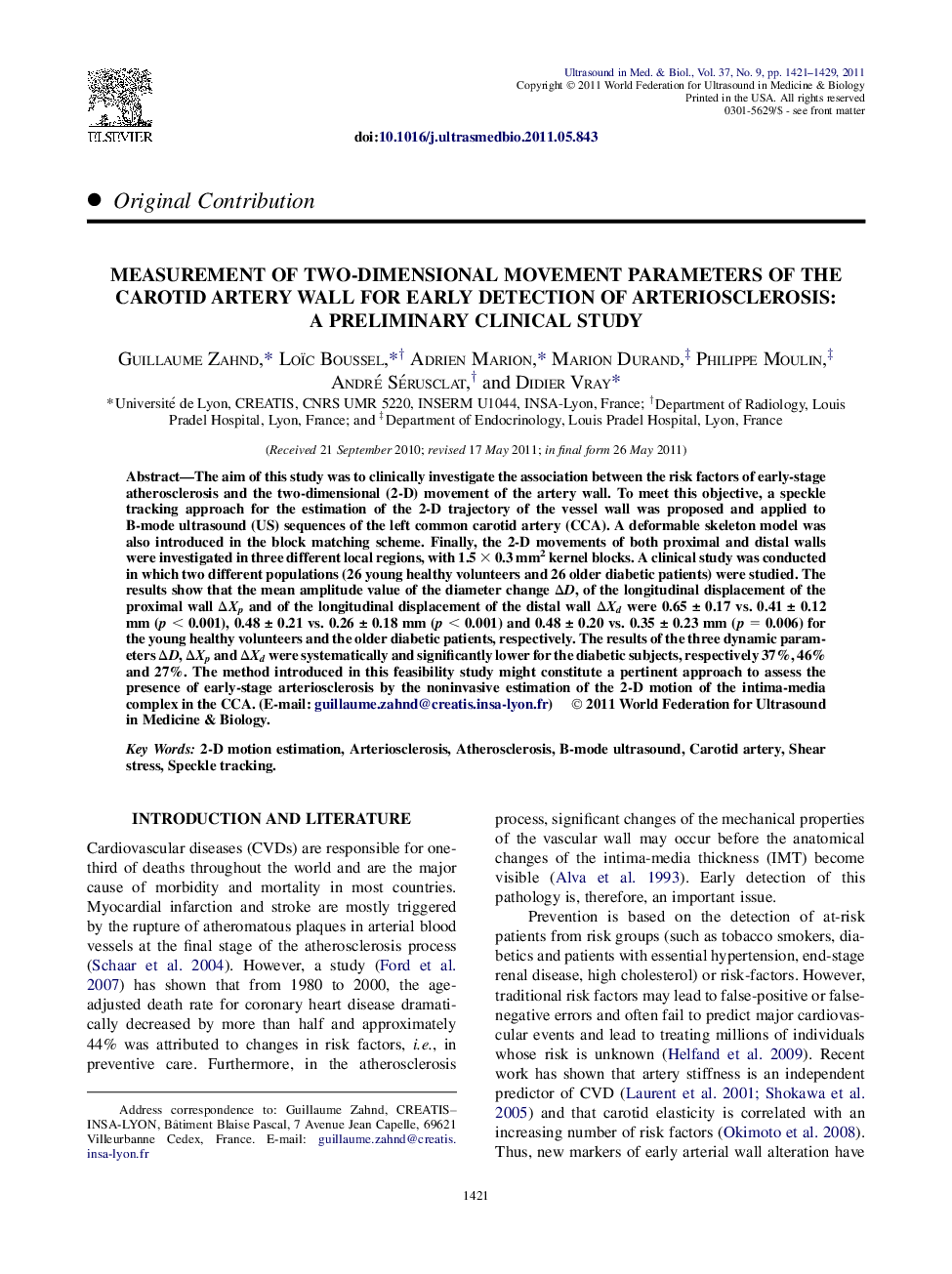| Article ID | Journal | Published Year | Pages | File Type |
|---|---|---|---|---|
| 1760961 | Ultrasound in Medicine & Biology | 2011 | 9 Pages |
Abstract
The aim of this study was to clinically investigate the association between the risk factors of early-stage atherosclerosis and the two-dimensional (2-D) movement of the artery wall. To meet this objective, a speckle tracking approach for the estimation of the 2-D trajectory of the vessel wall was proposed and applied to B-mode ultrasound (US) sequences of the left common carotid artery (CCA). A deformable skeleton model was also introduced in the block matching scheme. Finally, the 2-D movements of both proximal and distal walls were investigated in three different local regions, with 1.5 à 0.3 mm2 kernel blocks. A clinical study was conducted in which two different populations (26 young healthy volunteers and 26 older diabetic patients) were studied. The results show that the mean amplitude value of the diameter change ÎD, of the longitudinal displacement of the proximal wall ÎXp and of the longitudinal displacement of the distal wall ÎXd were 0.65 ± 0.17 vs. 0.41 ± 0.12 mm (p < 0.001), 0.48 ± 0.21 vs. 0.26 ± 0.18 mm (p < 0.001) and 0.48 ± 0.20 vs. 0.35 ± 0.23 mm (p = 0.006) for the young healthy volunteers and the older diabetic patients, respectively. The results of the three dynamic parameters ÎD, ÎXp and ÎXd were systematically and significantly lower for the diabetic subjects, respectively 37%, 46% and 27%. The method introduced in this feasibility study might constitute a pertinent approach to assess the presence of early-stage arteriosclerosis by the noninvasive estimation of the 2-D motion of the intima-media complex in the CCA.
Related Topics
Physical Sciences and Engineering
Physics and Astronomy
Acoustics and Ultrasonics
Authors
Guillaume Zahnd, LoÏc Boussel, Adrien Marion, Marion Durand, Philippe Moulin, André Sérusclat, Didier Vray,
